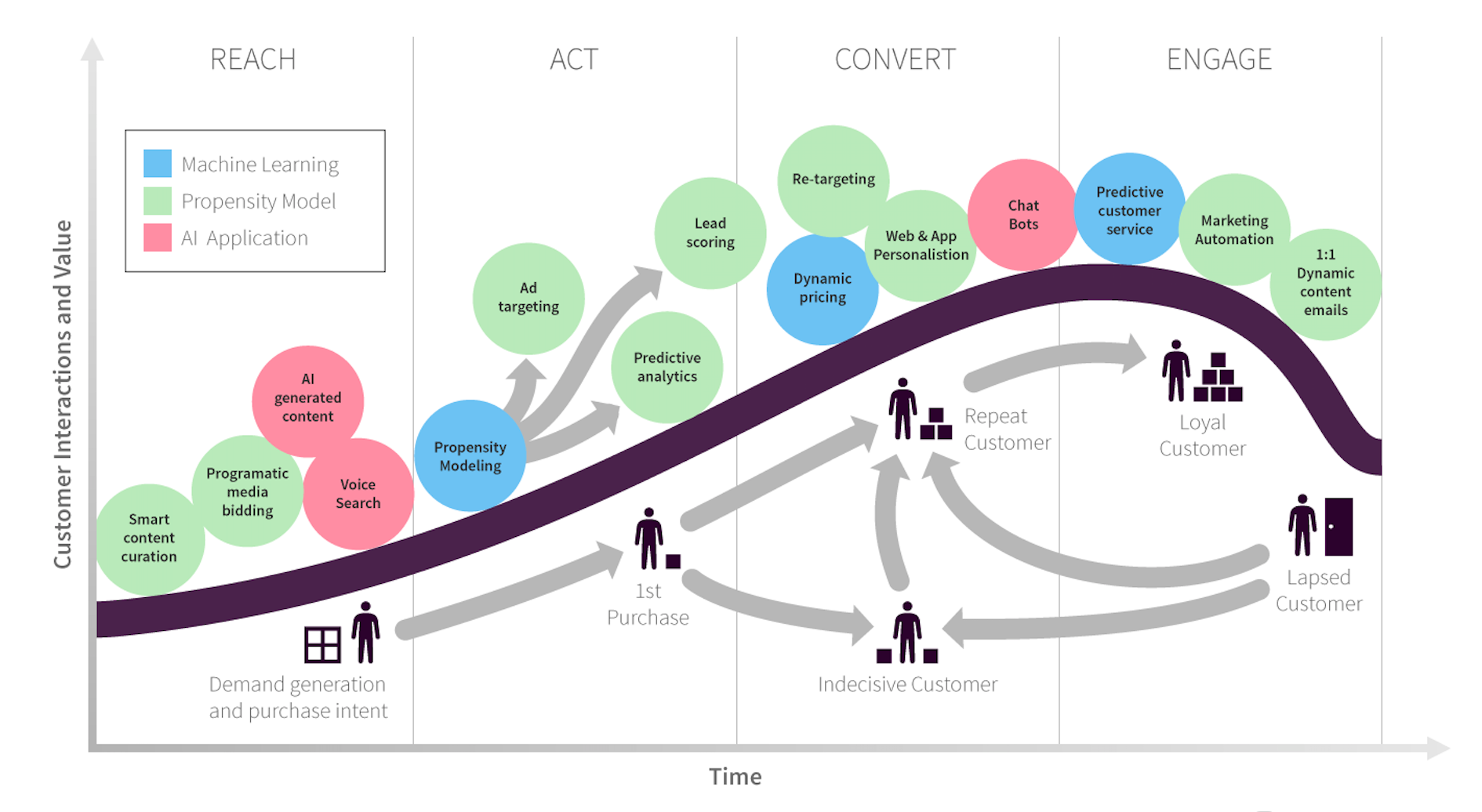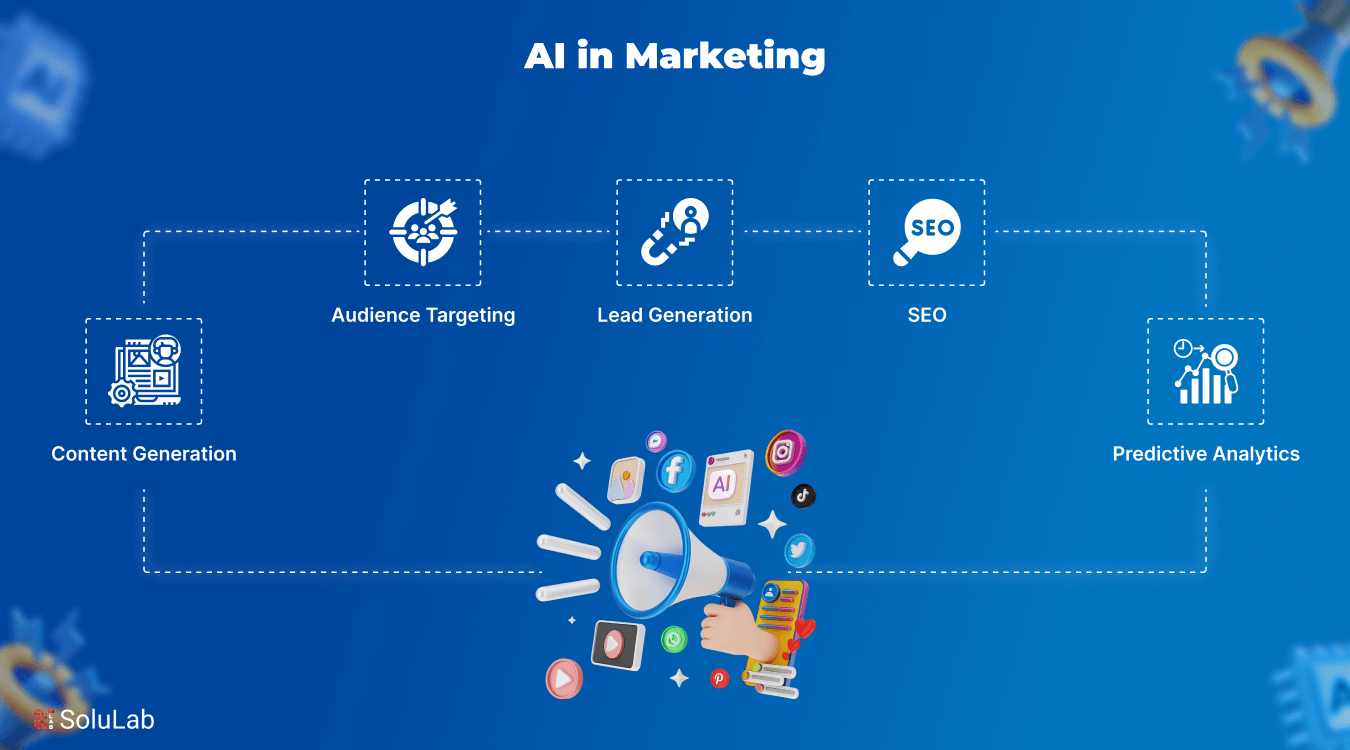Unleashing the Power of ai: Your Guide to Targeted Marketing Analytics
The marketing world used to be a bit like throwing spaghetti at a wall and seeing what stuck. You’d launch a campaign, maybe get some general numbers back, and then try to figure out what worked and what didn’t. It was often a lot of guesswork and crossed fingers. But then, Artificial Intelligence (AI) swaggered onto the scene, and suddenly, marketing analytics isn’t about guessing anymore. It’s about precision, prediction, and personalization on a scale we could only dream of before. We’re talking about a complete game-changer that’s making marketing smarter, more efficient, and way more effective.
What Exactly Is AI-Targeted Marketing Analytics?
At its core, AI-targeted marketing analytics is about using artificial intelligence to dig deep into mountains of marketing data. Imagine having an army of super-smart detectives sifting through every single interaction, every click, every purchase, every customer comment – and not just reporting what happened, but actually predicting what will happen next. That’s AI for you. It’s not just fancy spreadsheets; it’s about machine learning algorithms, natural language processing (NLP), and predictive models working tirelessly to uncover hidden patterns and provide actionable insights.

Think of it this way: traditional analytics might tell you what happened – “we had 100 sales last week.” AI-powered analytics tells you why those sales happened, who bought, what influenced their decision, and who else is likely to buy in the future. It’s about moving beyond descriptive data to truly understanding your customers and the market.
The Game-Changing Benefits for Your Marketing
So, why should you care about this AI magic? Because the benefits are massive, impacting everything from your budget to your customer relationships.
Hyper-Personalization at Scale

One of the biggest wins with AI in marketing analytics is the ability to personalize experiences like never before. Forget generic emails or ads. AI can analyze individual customer behavior, preferences, and even emotional responses to craft messages that resonate on a deeply personal level. This means showing the right product to the right person at the exact right time. We’re talking about dynamic website content, tailored product recommendations, and perfectly timed offers. This level of personalization leads to significantly higher engagement and conversion rates, making your customers feel seen and understood, which builds loyalty.
Smarter Decision-Making, Faster
In the fast-paced digital landscape, speed is key. AI can process and analyze vast amounts of data in real-time, providing instant insights into campaign performance, market shifts, and customer sentiment. This means you don’t have to wait days or weeks to understand if something is working. You can see the impact almost immediately and adjust your strategies on the fly. This agility allows marketers to be proactive rather than reactive, seizing opportunities and mitigating risks much quicker.
Optimized Ad Targeting and Budget Allocation

Ad spend can be a black hole if you’re not careful. AI helps you shine a light into that darkness. By analyzing historical performance, demographics, and contextual clues, AI can predict which ad creatives, platforms, and placements are most likely to yield results. It can even adjust bids and shift budgets in real-time to maximize your return on investment (ROI). This isn’t just about saving money; it’s about making every pound, dollar, or euro you spend on advertising work harder for you.
Predictive Analytics: Peering into the Future
Imagine knowing what your customers will want before they even know it themselves. That’s the power of predictive analytics, a core component of AI marketing. By analyzing past behaviors, market trends, and external factors, AI can forecast future customer needs, predict churn, and identify emerging trends. This foresight allows businesses to develop products, services, and campaigns that are perfectly aligned with future demand, giving them a significant competitive edge.
Enhanced Customer Relationship Management (CRM)
AI isn’t just for attracting new customers; it’s also brilliant at nurturing existing relationships. AI technologies can automate routine tasks in CRM, like segmenting customer data and identifying at-risk customers. More importantly, they can help deliver personalized customer messages and proactively address customer issues, leading to stronger relationships and increased customer lifetime value. Think of AI as your super-efficient customer care assistant, always on duty.
Unlocking Deeper Insights from Data
The sheer volume of data available today can be overwhelming. AI excels at making sense of this chaos. It can identify subtle patterns and correlations that humans might miss, performing complex analyses on structured and unstructured data (like social media comments or customer reviews). These deeper insights allow marketers to understand the nuances of customer behavior, pinpoint pain points, and discover untapped opportunities for growth.
The Journey to Implementing AI in Your Marketing Analytics
So, you’re convinced. You want to bring AI into your marketing analytics. But where do you start? It’s not about flicking a switch; it’s a journey.
Define Clear Objectives
Before you even think about tools, figure out what you want AI to achieve. Do you want to improve customer engagement? Automate campaign management? Predict purchasing behavior? Clear objectives ensure that your AI efforts are aligned with your overall business goals and provide measurable outcomes.
Assess Your Data Infrastructure
AI thrives on data – and good data at that. You need to ensure your current data systems can handle the volume, variety, and velocity required for AI analytics. This often means cleaning, structuring, and integrating data from various sources. A robust data infrastructure is the foundation upon which successful AI models are built.
Select the Right AI Tools
The market is awash with AI-driven marketing tools, from AI CRM platforms to predictive analytics software and generative AI for content. Choosing the right tools depends on your specific objectives and existing infrastructure. It’s often best to start with tools that solve a specific, high-value problem and then expand as you gain experience.
Train and Upskill Your Teams
AI isn’t here to replace human marketers; it’s here to empower them. Effective AI solutions require collaboration between marketing, data science, and IT teams. Your marketing team needs to understand how to interpret AI-generated insights and leverage them effectively. Investing in training and upskilling ensures that your team can work hand-in-hand with AI, maximizing its potential.
Iterate and Optimize
AI implementation isn’t a one-and-done deal. It’s an ongoing process of iteration and optimization. You’ll need to continuously monitor the performance of your AI models, gather feedback, and make adjustments to improve their accuracy and effectiveness over time. The more data AI processes and the more it learns from your specific context, the smarter it becomes.
The Roadblocks and How to Navigate Them
While the promise of AI is exciting, it’s not without its challenges. Understanding these hurdles beforehand can help you navigate them successfully.
Data Privacy Concerns
AI relies heavily on data, which brings up significant concerns around data privacy and compliance with regulations like GDPR. Marketers must ensure that all AI tools and practices adhere to strict data protection laws and maintain transparency with customers about how their data is being used. Ethical data handling is paramount for building and maintaining customer trust.
AI Bias
AI systems learn from the data they’re fed. If that data contains historical biases, the AI can inadvertently perpetuate them, leading to unfair or inaccurate marketing outcomes. Addressing AI bias requires careful data curation, rigorous testing, and continuous monitoring to ensure fairness and inclusivity in your marketing strategies.
Integration Complexity
Integrating new AI systems with existing legacy marketing systems can be complex and costly. It often requires significant technical expertise and can be a barrier for smaller businesses. Cloud-based AI solutions and modular architectures can help ease this burden, but careful planning and potentially expert assistance are often necessary.
Skill Gap
There’s a growing need for marketers who understand both marketing principles and the capabilities of AI. The skill gap can make it challenging to effectively implement and manage AI-driven strategies. Investing in training programs, hiring data scientists, or partnering with AI specialists can help bridge this gap.
The Cost of Implementation and Training
While AI can lead to significant ROI, the initial investment in tools, infrastructure, and training can be substantial. Businesses need to carefully consider the costs and benefits, perhaps starting with smaller, more manageable AI projects to demonstrate value before scaling up.
Maintaining Creativity and Human Touch
AI excels at analysis and automation, but it currently lacks the intuitive creativity and emotional intelligence that human marketers bring. Over-reliance on AI can lead to generic or repetitive content that lacks the human touch that often resonates most deeply with audiences. The goal should be to use AI to augment human creativity, not replace it entirely.
Conclusion
AI-targeted marketing analytics is no longer a futuristic concept; it’s a present-day imperative for businesses looking to stay competitive. By harnessing the power of AI, marketers can move beyond guesswork to embrace precision, personalization, and predictive foresight. While challenges exist, from data privacy to integration complexity, the transformative benefits – including hyper-personalization, smarter decision-making, optimized ad spend, and deeper customer insights – far outweigh the hurdles. The key lies in strategic implementation, continuous learning, and a commitment to integrating AI as a powerful assistant that amplifies human ingenuity, rather than replacing it. The future of marketing is intelligent, data-driven, and profoundly personalized, and AI is the engine driving us there.
Five Unique FAQs After The Conclusion
How can small businesses leverage AI-targeted marketing analytics without a massive budget?
Small businesses can start by focusing on specific, high-impact AI applications, such as using AI-powered tools for email marketing segmentation, basic predictive analytics for churn prevention, or content generation for social media posts. Many affordable, cloud-based AI tools and platforms offer subscription models, making them accessible. Partnering with marketing agencies that specialize in AI can also provide expertise without the need for in-house development.
What’s the difference between traditional marketing analytics and AI-targeted marketing analytics?
Traditional marketing analytics primarily focuses on descriptive data, telling you what has already happened (e.g., website traffic, conversion rates). AI-targeted marketing analytics, on the other hand, goes much deeper by leveraging machine learning to provide predictive and prescriptive insights. It not only tells you what happened but also why it happened, what is likely to happen next, and what actions you should take to achieve specific marketing goals.
Is AI-generated content going to replace human content writers in marketing?
While AI can generate content efficiently, it’s more of a powerful assistant than a replacement for human content writers. AI excels at creating drafts, optimizing for SEO, and generating variations, but it often lacks the nuanced understanding of human emotion, unique creativity, and the ability to truly connect with an audience on a deeper level. The most effective approach is a collaborative one, where AI handles the heavy lifting of data analysis and initial content creation, allowing human writers to focus on storytelling, strategic messaging, and adding that indispensable human touch.
How does AI help with understanding customer sentiment from unstructured data like social media comments?
AI uses Natural Language Processing (NLP) to analyze vast amounts of unstructured text data, such as social media comments, customer reviews, and forum discussions. NLP algorithms can identify keywords, phrases, and emotional cues to determine the sentiment (positive, negative, neutral) expressed by customers. This allows marketers to quickly gauge public perception of their brand, products, or campaigns, and respond appropriately, often in real-time.
What are the ethical considerations marketers need to be aware of when using AI in analytics?
Key ethical considerations include data privacy and security, ensuring compliance with regulations like GDPR. Marketers must also address algorithmic bias, as AI can perpetuate biases present in its training data, leading to unfair targeting or outcomes. Transparency with customers about how their data is used, and avoiding manipulative practices or overly intrusive personalization, are also crucial for maintaining trust and brand reputation.

